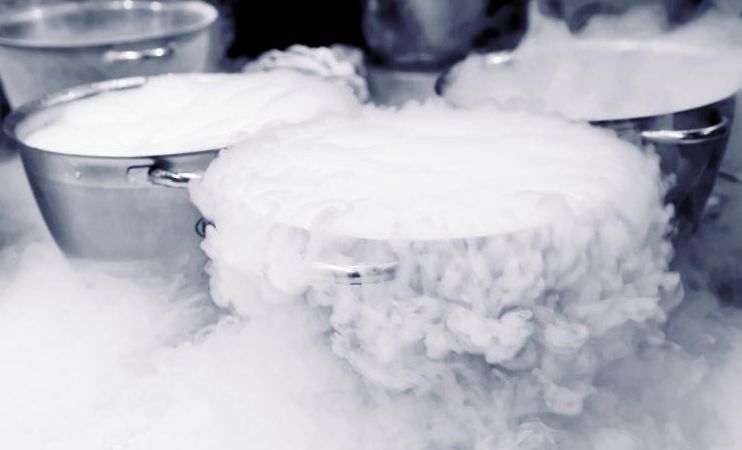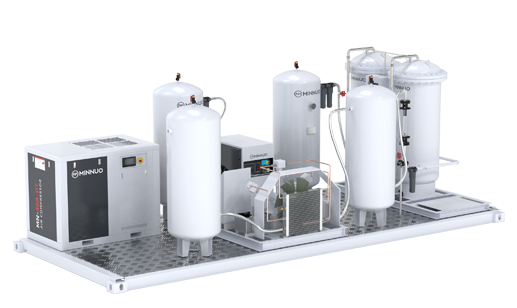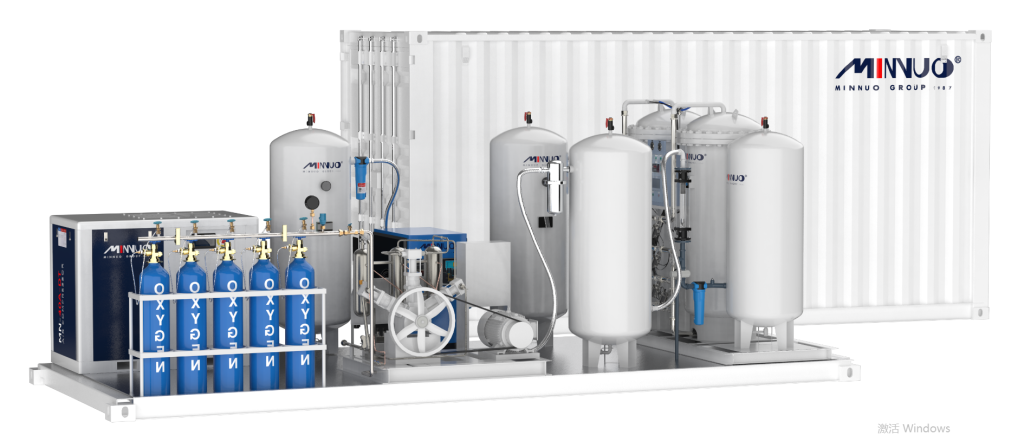Liquid nitrogen is one of the coldest substances known to science and industry. Often seen in science labs, medical procedures, and even culinary applications, it has a temperature that can instantly freeze most materials.
How Cold is Liquid Nitrogen? Liquid nitrogen boils at a temperature of -196°C (-320.44°F), which makes it one of the coldest substances used in industrial and scientific applications. In Kelvin, liquid nitrogen’s boiling point is 77 K. This extreme cold allows it to be used for cryogenics, food preservation, and even in medical treatments like cryosurgery.
In this guide, we’ll dive into the science behind liquid nitrogen’s frigid temperature, how it’s produced, and its wide-ranging applications in everything from medicine to food. Along the way, we’ll explain how cold liquid nitrogen is in Celsius and Kelvin, and why these temperatures are crucial in understanding its behavior.
What is Nitrogen?
Before we can truly understand how cold liquid nitrogen is, it’s important to first grasp the fundamental properties of nitrogen itself. Nitrogen, as a gas, surrounds us every day in the atmosphere, but when cooled to extreme temperatures, it transforms into a liquid with remarkable properties. Let’s explore the different characteristics of nitrogen, starting with its abundance in the Earth’s atmosphere.
Nitrogen in the Earth’s Atmosphere
Nitrogen makes up around 78% of the Earth’s atmosphere, which means it’s all around us in its gaseous form. As a diatomic molecule (N₂), nitrogen is stable and non-reactive under normal atmospheric conditions. However, when cooled to extremely low temperatures, nitrogen can be condensed into a liquid.
The Transition to Liquid Nitrogen
The shift from nitrogen gas to liquid nitrogen involves cooling the gas to a temperature where its molecules slow down enough to condense into a liquid. This transition occurs when the gas is cooled below its boiling point. Understanding this process provides insight into the fascinating behavior of nitrogen when it becomes a liquid.
Boiling Point of Nitrogen: -196°C
The boiling point of nitrogen is the key temperature where it transitions from a gas to a liquid. For nitrogen, this occurs at -196°C. This is a critical threshold, as it allows nitrogen to be stored, transported, and used in its liquid form for a variety of applications, including cooling and cryogenics.

How Liquid Nitrogen is Produced
Now that we understand the properties of nitrogen, the next step is to explore how nitrogen is transformed into its liquid state on an industrial scale. Producing liquid nitrogen involves sophisticated methods and technology, where air is cooled and separated into its components. The process of producing liquid nitrogen is key to making it available for commercial and industrial uses.
Air Separation Process
The primary method for producing liquid nitrogen is through the air separation process. In this process, nitrogen is separated from other gases in the atmosphere by cooling and compressing the air. This method is highly efficient and allows for the mass production of liquid nitrogen for use in a variety of fields, from food preservation to medical applications.
Small-Scale Production Methods
While industrial-scale production involves large equipment and distillation towers, smaller quantities of liquid nitrogen can also be produced in laboratories. These small-scale methods use the Joule-Thomson effect to cool nitrogen gas to its liquefaction point. This makes liquid nitrogen readily available for scientific research and educational purposes.
The Temperature of Liquid Nitrogen
The most defining characteristic of liquid nitrogen is its temperature. But how cold is it really? Liquid nitrogen has a boiling point far below freezing temperatures we experience daily. To truly understand how cold it is, we’ll look at its temperature in both Celsius and Kelvin, and compare it to other cryogenic liquids.
How Cold is Liquid Nitrogen in Celsius?
Liquid nitrogen’s boiling point is -196°C, making it one of the coldest substances commonly used in industry and research. To put that into perspective, consider the following:
- The coldest natural temperature ever recorded on Earth was -89.2°C (-128.6°F) in Antarctica.
- The temperature of dry ice is -78.5°C (-109.3°F).
At -196°C, liquid nitrogen can instantly freeze materials upon contact, making it useful for freezing biological samples, performing cryosurgery, and preserving food in flash-freezing processes.
How Cold is Liquid Nitrogen in Kelvin?
When scientists need precision in measuring temperature, they often turn to the Kelvin scale, which starts from absolute zero. Absolute zero (0 K) is the lowest temperature possible, where all molecular motion ceases. It boils at 77 K, which is still far above absolute zero but incredibly cold compared to most substances we encounter.
Liquid Nitrogen Compared to Other Cryogenic Liquids
Liquid nitrogen is not the only cryogenic liquid used in industrial and scientific applications. Other cryogenic substances, like liquid helium and liquid hydrogen, are even colder. Understanding how liquid nitrogen compares to these substances can give us insight into why nitrogen is the preferred choice in many applications.
For example, while liquid helium boils at 4.2 K, which is much colder, its cost and handling difficulties make liquid nitrogen a more practical choice for most purposes.

Uses of Liquid Nitrogen: Why Does Its Temperature Matter?
The extreme cold of liquid nitrogen is what makes it so versatile. From freezing food to conducting delicate medical procedures, liquid nitrogen’s temperature is at the core of its usefulness. Its ability to freeze almost anything it touches means it has countless applications across various industries.
Industrial Uses
In industry, liquid nitrogen is widely used for cooling and freezing. Its extreme cold is crucial in processes like cryogenic cooling for electronics and cryogenic hardening of metals, where the low temperatures alter material properties to make them stronger and more durable.
Scientific Research
Scientists rely on liquid nitrogen to store and preserve biological samples. Its low temperature halts the biological decay process, making it ideal for long-term storage of cells, tissues, and even organs. Additionally, liquid nitrogen plays a key role in experiments where scientists study the effects of low temperatures on materials.
Medical Applications
In medicine, liquid nitrogen is used for cryosurgery, where it is applied to destroy abnormal tissue. Its freezing temperature kills unwanted cells, making it an effective treatment for skin lesions, warts, and certain types of cancers. Its precision and minimal impact on surrounding healthy tissue make it highly valuable in medical procedures.
Food and Culinary Uses
In the food industry, liquid nitrogen is used to flash freeze food products. This process rapidly cools food, preserving its texture and nutrients better than traditional freezing methods. Chefs also use liquid nitrogen in molecular gastronomy to create unique dishes with dramatic visual effects, such as frozen desserts and instantly chilled drinks.
Space and Aerospace Uses
Liquid nitrogen’s cold temperature is also useful in space exploration. It can simulate the freezing conditions of outer space, helping engineers test spacecraft components under extreme conditions. Additionally, it is used in rocket fuel systems to cool and stabilize fuel before launch.
What Happens When Objects Are Exposed to Liquid Nitrogen?
The unique freezing power of liquid nitrogen becomes immediately apparent when objects are exposed to it. The extreme cold causes materials to behave in unusual ways, making liquid nitrogen an excellent tool for demonstrating the effects of low temperatures in both educational and practical settings.
Physical Reactions to Extreme Cold
When materials like rubber, plastic, or organic matter are exposed to liquid nitrogen, they undergo dramatic changes. Rubber becomes brittle and shatters, while flowers freeze so quickly that they become fragile and break at the slightest touch. These reactions occur because the molecular activity in these materials slows down significantly at such low temperatures.
The Leidenfrost Effect
Another fascinating phenomenon seen with liquid nitrogen is the Leidenfrost effect. When a material much hotter than liquid nitrogen comes into contact with it, a layer of nitrogen gas forms between the material and the liquid. This gas acts as an insulator, allowing the object to “float” above the nitrogen, preventing immediate freezing.
Dangers of Handling Liquid Nitrogen
While liquid nitrogen’s extreme cold makes it useful, it also poses risks. Direct contact with liquid nitrogen can cause frostbite in seconds, and improper storage can lead to asphyxiation if nitrogen gas displaces oxygen in a confined space. Careful handling and appropriate safety measures are critical to preventing accidents.
Safety Precautions with Liquid Nitrogen
Liquid nitrogen’s benefits are vast, but so are the risks if it’s not handled safely. Due to its low boiling point and rapid evaporation into nitrogen gas, strict safety measures are necessary when working with liquid nitrogen in any setting.
Personal Protective Equipment (PPE)
When handling liquid nitrogen, wearing proper PPE is essential. This includes cryogenic gloves, face shields, and protective clothing to guard against accidental splashes or exposure. These precautions help prevent the risk of frostbite or burns.
Proper Storage and Transportation
Liquid nitrogen is stored in Dewar flasks or other insulated containers that allow nitrogen gas to safely escape as the liquid evaporates. These containers are designed to handle the extreme cold and prevent pressure buildup, which could lead to an explosion.
Ventilation and Asphyxiation Risks
Since nitrogen gas can displace oxygen in confined spaces, good ventilation is necessary when working with or storing liquid nitrogen. This ensures that oxygen levels remain safe for breathing, especially in smaller or enclosed areas.
Cryogenic Science and Future Technologies
Looking forward, liquid nitrogen is not just a tool of the present—it’s also playing a key role in shaping the future. Advances in science and technology rely on the freezing power of liquid nitrogen for everything from medical breakthroughs to advancements in energy storage and computing.
The Role of Liquid Nitrogen in Cryogenics
Liquid nitrogen’s role in cryogenics—the science of freezing biological materials—is indispensable. It allows for the long-term storage of cells, tissues, and other biological materials that could be used in medical treatments or research far into the future.
Quantum Computing and Superconduction
In the field of quantum computing, the extreme cold provided by liquid nitrogen is crucial for creating the right environment for superconductors. These materials, when cooled to very low temperatures, conduct electricity without resistance, paving the way for faster, more powerful computing systems.
Energy Storage and Transportation Innovations
Liquid nitrogen is also being explored as part of cryogenic energy storage systems. By using its low temperature, researchers are investigating ways to store energy more efficiently, potentially offering a new avenue for sustainable energy solutions in the future.
Conclusion
Liquid nitrogen is far more than just an incredibly cold liquid—it’s a versatile, essential tool in countless industries, from medicine to food preservation, scientific research, and space exploration. Its boiling point of -196°C (77 K) allows it to freeze materials instantly, making it invaluable in both day-to-day industrial tasks and cutting-edge scientific advancements.
However, as with any powerful tool, understanding and respecting the risks associated with liquid nitrogen is crucial. By following proper safety protocols and using liquid nitrogen appropriately, its full potential can be harnessed without harm.
FAQs
Liquid nitrogen boils at -196°C in Celsius and 77 K in Kelvin.
Liquid nitrogen’s extremely low temperature allows it to freeze and destroy tissue with precision, making it useful for removing warts, moles, and certain cancerous cells.
Yes, liquid nitrogen is essential for cryopreservation, where it freezes biological samples, such as sperm, eggs, and tissues, preserving them for future use.
Minnuo Group: Your Trusted Expert in Cryogenic & Gas Solutions
As you explore “how cold liquid nitrogen is,” it becomes clear that managing such extreme temperatures requires exceptional technology and ultra-reliable equipment. Minnuo Group stands as a global leader in this specialized field.
As a premier Chinese manufacturer of industrial gas equipment, we go beyond providing scientific insights—we deliver high-impact industrial solutions. Minnuo Group specializes in the R&D and manufacturing of high-performance Liquid Nitrogen Generators (LN2), PSA Nitrogen Plants, and Cryogenic Air Separation Units (ASU). Our advanced technology ensures that nitrogen is consistently liquefied and maintained at its critical -196°C temperature, serving critical sectors such as medical research, food preservation, aerospace, and metal processing.
Why Choose Minnuo?
- Full Spectrum Solutions: From compact laboratory liquid nitrogen generators to large-scale industrial air separation plants, we provide fully customized solutions for any scale.
- Superior Energy Efficiency: Our cutting-edge air separation technology significantly reduces energy consumption during the liquid nitrogen production process.
- Global Footprint: With exports to over 150 countries, our equipment is backed by prestigious international certifications, including ISO, CE, ASME, and DOT.
Whether you are looking for cryogenic storage solutions or planning to build an autonomous on-site gas supply system, Minnuo’s team of senior engineers provides end-to-end support—from initial design to final installation and training.






 sales2:+86 17506119168
sales2:+86 17506119168

